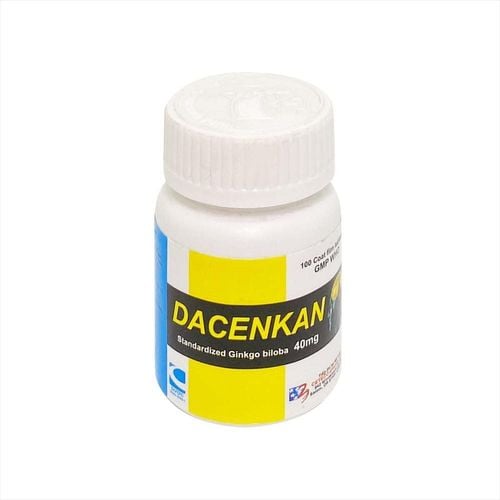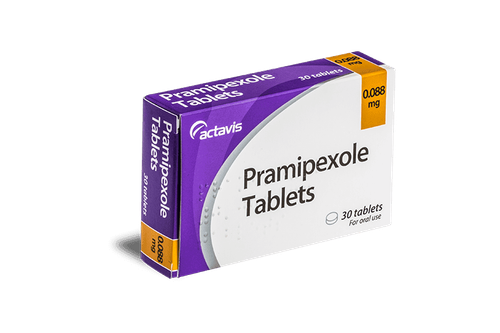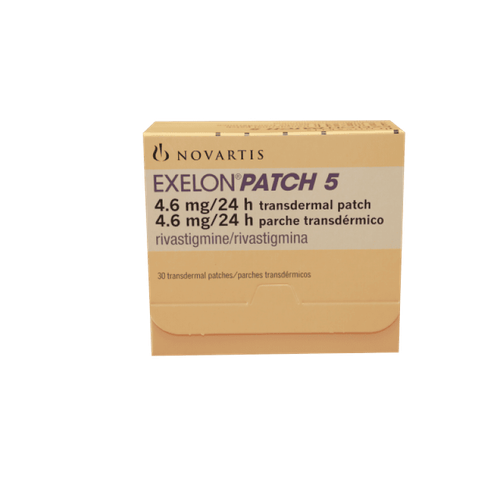This is an automatically translated article.
Zelapar is often used in combination with Levodopa / Carbidopa to treat movement disorders caused by Parkinson's disease. Although it does not cure Parkinson's disease, Zelapar can improve symptoms of tremor, muscle stiffness, expand range of motion and ability to walk, perform daily activities of patients.1. What is Zelapar?
The drug Zelapar has the main ingredient is Selegiline, which works by blocking the breakdown of Dopamine, a chemical found in the brain. It is low levels of dopamine that are associated with Parkinson's disease. Zelapar is often used in combination with 2 drugs to treat Parkinson's disease: Carbidopa and Levodopa. Works by helping the above 2 drugs work more effectively, against Parkinson's disease for a longer time.2. Instructions on how to use Zelapar
Zelapar is usually absorbed through the oral mucosa. The user washes his hands, puts the tablet on the tip of his tongue, and lets the medicine slowly dissolve. Take this medication once a day in the morning or as directed by your doctor (Taking this medication late in the day may cause trouble sleeping).
Note:
Do not chew, crush or swallow the tablet whole. Just wait for the tablet to dissolve slowly in the oral cavity; To avoid accidental ingestion, avoid eating or drinking for at least 5 minutes before or after taking this product; Your doctor may direct you to reduce your dose of Levodopa if you experience more side effects while using Selegiline. Follow your doctor's instructions closely, do not stop or change the dose of any medicine without consulting your doctor first; If you are taking Zelapar or 14 days after stopping it, to avoid dangerous (possibly life-threatening) high blood pressure you should not eat products that are high in Tyramine. Specifically: Dried meat, smoked meat, fermented meat (including sausages, sour meat...); Any beef, poultry, fish or liver damaged naturally or from improper storage; Unpasteurized beer; Aged cheeses (e.g. blue cheese, Cheddar, Parmesan, Romano, Swiss cheese...); Pickled sauerkraut, soybeans, soy sauce, tofu....; Over-the-counter supplements, cough and cold medicines contain Tyramine.
3. Zelapar side effects
In some cases, Zelapar can cause some common problems such as:
Dizziness; Nausea, headache; Stomach pain, constipation; skin rash or irritation on the skin; Have problems sleeping (insomnia); Mouth sores, mouth ulcers, pain when swallowing. You should call your doctor right away if you notice any serious side effects such as:
Fainting; Overbalance; Mental/mood changes (agitation, confusion, hallucinations, depression); Have unusually strong urges (Increased gambling, libido); Stiffness, more severe muscle twitching; Increased tremors, uncontrolled muscle movements; Swollen ankles and feet; Difficulty urinating; Unusual weight gain; Easy bleeding, bruising; Passing black (tarry) stools; The vomit looks like coffee grounds. Some other important notes:
Zelapar can increase serotonin and in rare cases can cause a very serious condition called serotonin syndrome. The risk increases if you are also taking other medications that increase serotonin. Therefore, tell your doctor about all the medications you are taking and take special note of the following symptoms: Hallucinations, unusual restlessness, loss of coordination, severe dizziness, fast heartbeat, unexplained fever, nausea and vomiting, severe diarrhea, muscle twitching; In other rare cases, Zelapar can also cause a severe hypertensive crisis (Hypertension crisis), which can be fatal. Certain drug interactions and unprescribed food intake can increase this risk. Get emergency medical help right away if you notice any of the following signs of distress: Frequent headaches, unusually fast (or slow) heart rate, chest pain, stiff neck, aches, nausea and vomiting, sweating (sometimes accompanied by sweating). with fever), pupil dilation, change in vision (diplopia, blurred vision), sudden sensitivity to light (photophobia); Some Selegiline users have reported a sudden feeling of drowsiness while performing normal activities (eg, driving, talking on the phone). To be on the safe side, do not drive or engage in activities that require extreme concentration while taking this medication. The risk of sleep disturbances is increased when you take Zelapar with alcohol or other drugs that also cause sleep.
4. Contraindications to the use of Zelapar
Zelapar should not be used for the following subjects:
People who are allergic to Selegiline and other ingredients of the drug; People who have taken Fluoxetine (Prozac, Sarafem, and others) in the past 5 weeks. In addition, some drugs can cause unwanted or dangerous side effects when taken together with Zelapar. Your doctor may consider changing your treatment plan if you are taking any of the following medicines:
Cough medicine containing Dextromethorphan ; Cyclobenzaprine (Flexeril); Meperidine (Demerol) or another Opioid anesthetic; Methadone drug ; St. John's wort; Tramadol (Ultram, Ultracet); antidepressants (Citalopram, Escitalopram, Desvenlafaxine, Duloxetine, Fluvoxamine, Levomilnacipran, Nefazodone, Milnacipran, Mirtazapine, Paroxetine, Vortioxetine, Venlafaxine, Vilazodone, and others); MAO inhibitors (Isocarboxazid, Linezolid, Methylene Blue, Phenelzine, Rasagiline, Selegiline, Tranylcypromine and others); After you stop taking Zelapar, you must wait at least 14 days before taking any of the medicines listed above.
To make sure Zelapar is safe for you, proactively tell your doctor if you have:
Liver or kidney disease; High Blood Pressure; Phenylketonuria (Zelapar tablets may contain phenylalanine). Parkinson's patients may be at increased risk for skin cancer (melanoma), so talk to your doctor about whether you need routine diagnostic testing.
It is not known whether Zelapar will harm an unborn baby or a nursing baby. Therefore, pregnant women and lactating women should discuss and consult their doctors about the direction of drug use.
It is best before taking Zelapar, patients should carefully read the instructions and follow the instructions of the specialist doctor for the most effective treatment results.













